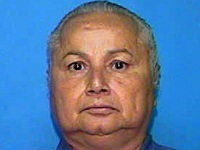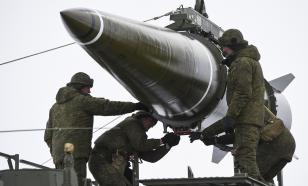Colombia: The queen is dead, long live the barons!
On the night of September 4, in Colombia, Griselda Blanco was killed. She wore the title of the Queen of Cocaine. Back in the 1970s, she started supplying cocaine from Colombia to the United States. Blanco has developed ways to deliver drugs that have been used by drug traffickers for decades. She was one of the first in the country who started working with large volumes.
The murder of Griselda Blanco is just one of many moments of this war of the government of Colombia with the powerful drug mafia that has been lasting for decades.

For several decades, the war against drug traffickers has been ongoing in Colombia. This battle has started in the 1970s, when a group of Colombians from Medellin, one of the largest cities in the country forced Cubans out of the criminal market. As a result, 80 percent of cocaine in the U.S turned up in the hands of Colombian traffickers. During these years, the history of the infamous Medellin Cartel, a powerful drug trafficking organization, has begun that lasted about two decades.
In the mid-1990s, the criminal cartel consisted of about15,000 people. The drug cartel took control over the cocaine trade both in Colombia and other Latin American countries. During the time of its greatest power, Medellin cartel controlled four-fifths of the world's cocaine. The cartel has a strong technical means, including airplanes and submarines.
The head of the criminal group Pablo Escobar was not just a leader of the cocaine cartel, but the unquestioned authority of the world production and distribution of cocaine. Criminal activity has brought those engaged incredible income. In 1989, according to the Forbes magazine, Escobar took seventh place among the richest people in the world with a personal fortune of dozens of billions of dollars. In the 1980s, he began his political activity and at 32 became a substitute member of the Congress of Colombia and even thought of presidency. The leaders of the drug mafia influence even the country's politics.
In 1984, Pablo Escobar suggested the government to legalize the drug trade in Colombia. In exchange, he agreed to pay the entire foreign debt amounting to $15 billion, as well as provide a flow of investment in Colombia. In response to the refusal of the President Betancourt, the drug mafia has launched a real war in the country where many people were killed.
However, in 1993 Medellin's cartel collapsed, and in the same year, on December 2, Pablo Escobar was killed. However, this was not the end of the Colombian drug mafia. Both in the 1990s and now the cocaine mafia in Colombia has been very active, and is well equipped technically due to large profits.
According to the newspaper Die Welt, on July 16, 2012 the staff of the Navy of Honduras found in a small bay a real submarine of the Colombian drug traffickers. Aboard the submarine there were four tons of cocaine cargo guarded by five militants. As it was found later, the submarine went from a small Colombian city of Buenaventura to the Pacific coast. Much of the population in Buenaventura is engaged in arms trade and drug trafficking. A kilogram of cocaine costs about 70 thousand dollars in the market, so the profit is easy to calculate. Experts say that the submarine was quite new, with a length of about 19 meters, able to stay under water for a week. The military cannot yet say how many of these submarines criminals have.
Thanks to the ample funds, the leaders of criminal organizations are able to bribe police officials to launder their dirty money. What about the government? How is Colombia fighting trafficking of cocaine?
The government is trying to combat drug trafficking, and it is sometimes possible, but with mixed success. Police arrests drug dealers, conducting raids on plantations and cocaine laboratories, reveals intermediaries and cracks down on companies that make drugs or are engaged in money laundering. Yet, the cracked down farms and businesses often get replaced with the new ones, and the arrested leaders of the drug mafia are replaced with the new ones.
In 2000, the U.S. aid to Colombia has launched "Plan Colombia", in which the United States provided $1.3 billion to Colombia to fight the common evil. Thanks to the efforts of the authorities from 2000 to 2009, the amount of coca cultivation in the country was reduced by 58 percent.
The funds are also allocated to the local peasants, many of them from time immemorial engaged in cultivation of coca in remote areas of the country, who are now able to start producing other products purchased by the state at fixed prices.
The authorities have also launched a program called "Colombia - drug-free territory" in order to instill the idea about the dangers of drug use in young people of the country.
Government measures to combat drug trafficking are bearing fruit. According to the Director of the Office of the White House on the state policy in the field of drug control Gil Kerlikowske, in the past decade the production of cocaine in Colombia decreased by two-thirds. Colombia for the first time since 1995 began producing less cocaine than Peru and Bolivia.
In February of 2012 the government decided to modernize its army to combat drug trafficking and is buying weapons and equipment in different countries. However, according to Kerlikowske, the drug mafia is still very strong in Colombia and other Latin American countries, and the U.S. would continue to provide financial assistance to fight drug traffickers. But can one win the war with the powerful Colombian drug lords?
Apparently, in a war with such a social evil as drugs it is impossible to win completely. We can only minimize the impact of these crimes on the population through various measures, such as the promotion of a healthy lifestyle, the armed struggle against the drug mafia with the latest technical equipment, anti-money laundering campaign, different social arrangements, etc.
One of the most controversial measures to combat drugs is their legalization, even partial. A columnist of the publication El Nuevo Herald Cordoba Enrique Rocha speaks about the legalization of drugs as a possible measure to combat drug trafficking. He argues that the legalization of drugs and campaign for healthy lifestyle will reduce the price of the potion, and this criminal business will not be so attractive to criminals. In any case, the problem of drug-related crime in Colombia is still acute, and it has to be dealt with.
Sergei Vasilenko
Pravda.Ru
Subscribe to Pravda.Ru Telegram channel, Facebook, RSS!


